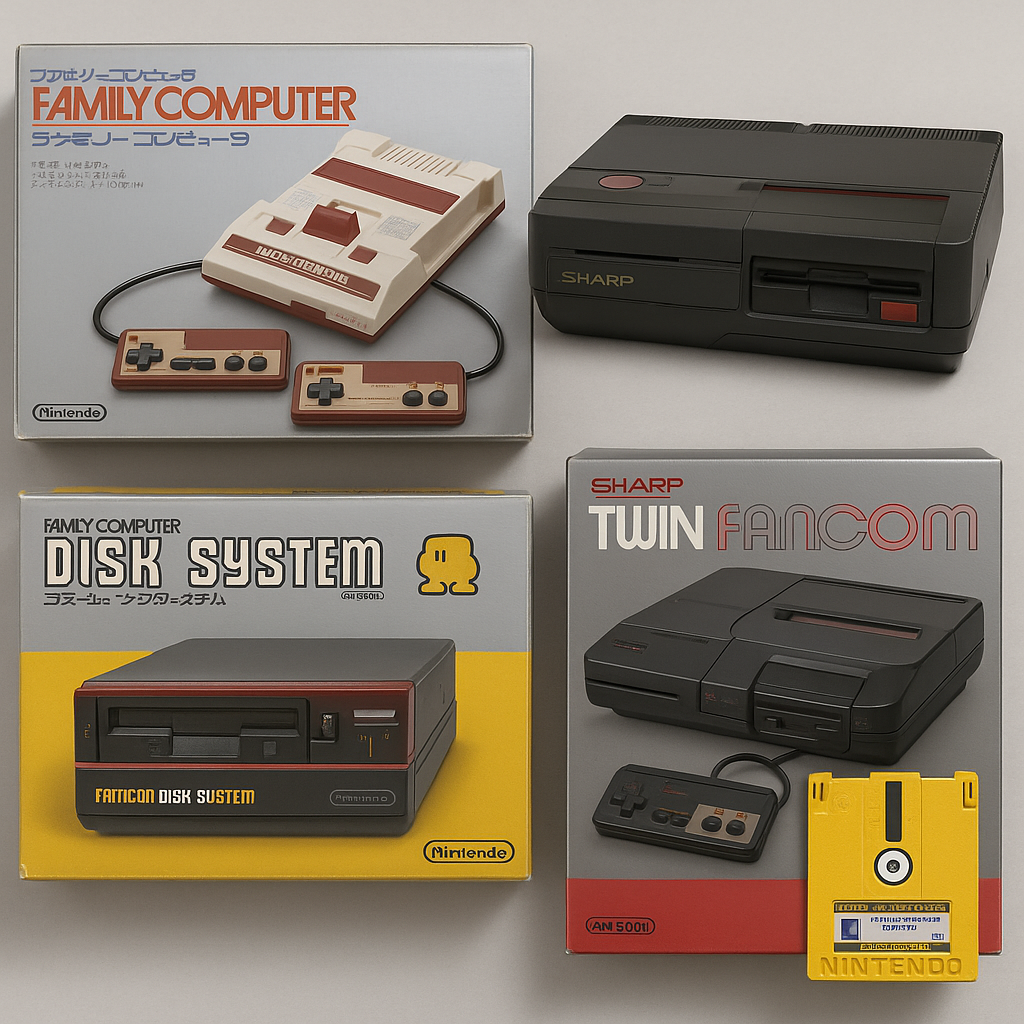
The History and Legacy of the Nintendo Famicom Disk System
Share
The Famicom Disk System
The Nintendo Famicom Disk System, released exclusively in Japan in 1986, was a bold expansion of the original Family Computer (Famicom). Designed to enhance the gaming experience with greater storage, rewritability, and lower cost per game, this system became a cornerstone of Nintendo’s legacy in the Japanese gaming market. Today, it's a sought-after piece for retro gaming collectors worldwide.
The Birth of the Famicom Disk System
When Nintendo released the Family Computer (Famicom) in 1983, it revolutionized home gaming in Japan. However, limited by the storage of traditional cartridges, Nintendo engineers sought a new way to deliver games that were larger, more affordable, and easier to distribute. Enter the Famicom Disk System.
Launched in February 1986, the Famicom Disk System (FDS) used proprietary floppy disks called "Disk Cards" that allowed for save data, a feature not common in many early cartridge games.
How It Worked
The Famicom Disk System connected to the bottom of the original Famicom via a RAM Adapter. This adapter handled the game loading process and interfaced with the disk drive unit.
You can find a complete Famicom Unit with box and working disk system on QueDeJapon, fully functional with a new belt installed—a critical part for ensuring the drive works correctly.
Advantages and Game Library
The Disk System's biggest advantage was its writable media. Popular games like The Legend of Zelda and Metroid originally debuted on Disk Cards, allowing players to save progress for the first time.
This format also enabled Nintendo to create "Disk Writer Kiosks" in stores across Japan, allowing customers to rewrite games onto existing disks at a low cost.
Hardware Variations: The Sharp Twin Famicom
To further integrate the Famicom Disk System into one seamless unit, Sharp partnered with Nintendo to release the Sharp Twin Famicom. These systems combined the Famicom console and Disk System into a single piece of hardware.
Two popular versions include:
Both come with a new belt and are fully functional—a key factor when purchasing vintage hardware.
Essential Accessories
An important component for any collector or user of the Famicom Disk System is the RAM Adapter, which houses the necessary firmware to run Disk Cards. You can find an original Family Computer Disk System Memory RAM Adapter in stock at QueDeJapon.es.
Legacy and Collector’s Value
Although the Famicom Disk System was discontinued in the early 1990s, its influence on the gaming industry remains. It paved the way for game saving mechanics and digital distribution via kiosks—precursors to today’s digital storefronts.
For collectors, owning a fully working Famicom Disk System or a Sharp Twin Famicom is not just about nostalgia; it’s about preserving a pivotal moment in gaming history.
Explore our curated collection of vintage Famicom consoles and disk systems at QueDeJapon.es to relive this iconic era.
Conclusion
The Nintendo Famicom Disk System stands as a symbol of innovation during the golden age of Japanese gaming. Whether you're a dedicated collector or a retro enthusiast, owning a piece of this history is now easier than ever thanks to specialized retailers like QueDeJapon.es.
Rediscover the magic. Own the legacy.
